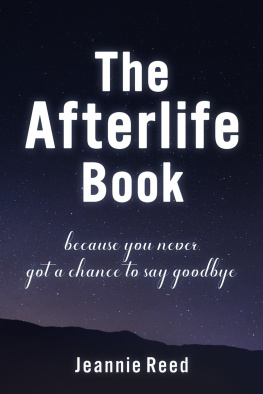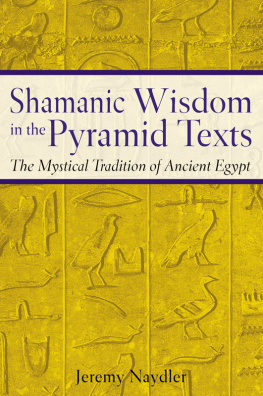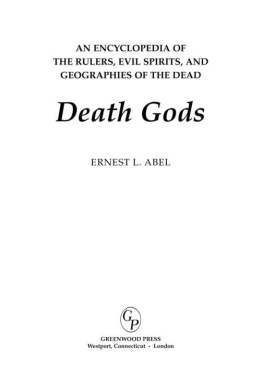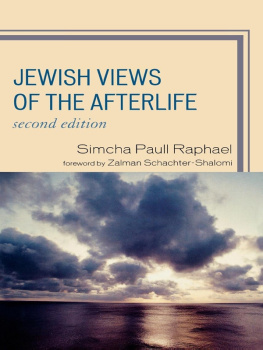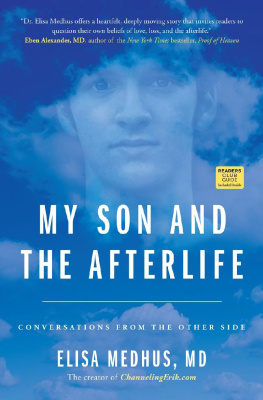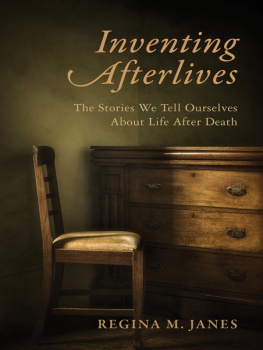This collection of essays, predominantly by up-and-coming scholars, speaks to the desideratum in scholarship for a wide-ranging view of the Classical afterlife. Its editor Juliette Harrisson has drawn on the work of an international group of scholars to produce a diverse selection of essays, which between them cover aspects of the period from Archaic Greece to Late Antiquity. Beginning with an editorial discussion of the interface between writing, practice and belief, the books four parts deal with material evidence from Greece; evidence from Etruria and provincial Rome; and literary and late antique approaches to afterlife belief and practice. This will be a useful collection for anyone wishing to grasp the parameters of the growing field of study of the Classical afterlife.
Emma Gee, University of St Andrews, UK
Imagining the Afterlife in the Ancient World
Human beings have speculated about whether or not there is life after death, and if so, what form that life might take, for centuries. What did people in the ancient world think the next life would hold, and did they imagine there was a chance for a relationship between the living and the dead? How did people in the ancient world keep their dead loved ones alive through memory, and were they afraid the dead might return and haunt the living in another form? What sort of afterlife did the ancient Greeks and Romans imagine for themselves? This volume explores these questions and more.
While individual representations of the afterlife have often been examined, few studies have taken a more general view of ideas about the afterlife circulating in the ancient world. By drawing together current research from international scholars on archaeological evidence for afterlife belief, chiefly from funerary sites, together with studies of works of literature, this volume provides a broader overview of ancient ideas about the afterlife than has so far been available.
Imagining the Afterlife in the Ancient World explores these key questions through a series of wide-ranging studies, taking in ghosts, demons, dreams, cosmology, and the mutilation of corpses along the way, offering a valuable resource to those studying all aspects of death in the ancient world
Juliette Harrisson is a Senior Lecturer in Ancient History at Newman University in Birmingham, UK. Her primary research interests lie in Roman period myth and religion, and in the reception of ancient Greece and Rome in modern popular culture, especially film, television and novels. Her monograph, Dreams and Dreaming in the Roman Empire: Cultural Memory and Imagination was published in 2013, and she is also the co-editor of Memory and Urban Religion in the Ancient World (with Martin Bommas and Phoebe Roy).
Imagining the Afterlife in the Ancient World
Edited by Juliette Harrisson
First published 2019
by Routledge
2 Park Square, Milton Park, Abingdon, Oxon OX14 4RN
and by Routledge
711 Third Avenue, New York, NY 10017
Routledge is an imprint of the Taylor & Francis Group, an informa business
2019 selection and editorial matter, Juliette Harrisson; individual chapters, the contributors
The right of Juliette Harrisson to be identified as the author of the editorial material, and of the authors for their individual chapters, has been asserted in accordance with sections 77 and 78 of the Copyright, Designs and Patents Act 1988.
All rights reserved. No part of this book may be reprinted or reproduced or utilised in any form or by any electronic, mechanical, or other means, now known or hereafter invented, including photocopying and recording, or in any information storage or retrieval system, without permission in writing from the publishers.
Trademark notice: Product or corporate names may be trademarks or registered trademarks, and are used only for identification and explanation without intent to infringe.
British Library Cataloguing-in-Publication Data
A catalogue record for this book is available from the British Library
Library of Congress Cataloging-in-Publication Data
Names: Harrisson, Juliette, editor.
Title: Imagining the afterlife in the ancient world / edited by Juliette Harrisson.
Description: First [edition]. | New York: Routledge, 2018. |
Includes bibliographical references and index.
Identifiers: LCCN 2018015173 (print) | LCCN 2018027309 (ebook) |
ISBN 9781315097879 (ebook) | ISBN 9781351578400 (web pdf) |
ISBN 9781351578394 (epub) | ISBN 9781351578387 (mobi/kindle) |
ISBN 9781138299795 (hardback: alk. paper)
Subjects: LCSH: Future lifeHistoryTo 1500. | DeathReligious
aspectsTo 1500. | Future life in literature.
Classification: LCC BL535 (ebook) | LCC BL535 .138 2018 (print) |
DDC 202/.3093dc23LC
record available at https://lccn.loc.gov/2018015173
ISBN: 978-1-138-29979-5 (hbk)
ISBN: 978-1-315-09787-9 (ebk)
Typeset in Times New Roman
by Florence Production Ltd, Stoodleigh, Devon, UK
Dis Manibus Chris Upton,
much-missed colleague and friend.
And for Mum, Dad, and Ed, of course, always;
and for Justin, who puts up with me.
Contents
- PART 1
The afterlife at Greek funerary sites - PART 2
The afterlife at Roman and Etruscan funerary sites - PART 3
The afterlife in literature - PART 4
The afterlife in Late Antique tradition
- PART 1
The afterlife at Greek funerary sites - PART 2
The afterlife at Roman and Etruscan funerary sites - PART 3
The afterlife in literature - PART 4
The afterlife in Late Antique tradition
Guide
Molly Evangeline Allen holds degrees in Classics and Art History from UC Berkeley, USA, the University of Otago, New Zealand, and Columbia University, USA, where she recently completed her PhD (2017). Her dissertation examined the range of ways that sorrow and grief were expressed through countenance and gesture via different types of mourners (e.g. young, old, male, female) in an attempt to better understand Classical Athenian conceptions and perceptions of death, dying and grief. She is generally interested in the expression of emotion in pre-Hellenistic Greek art as well as the various ways that the deceased are represented in Athenian vase imagery. She has held a number of internships at archaeological museums in the United States and Greece and spends most summers excavating in Cyprus or Greece. She is a regular team member of the Onchestos Excavation Project. Currently she teaches Art History and Classical Languages in New York City and is working to develop her dissertation into a monograph.
Isabella Bossolino is a PhD candidate in Greek Archaeology at the University of Pavia, Italy, currently writing her thesis on two Archaic cemeteries of Kamiros, Rhodes. In 2013, she earned an M.Phil. in Archaeology and Art History from the the Universit degli Studi di Pavia, Italy, writing a thesis on Malak Vanth: Iconography and Functions, which in 2014 won the Claudia Maccabruni prize for the best archaeology thesis. From 2008 to 2013, she was an alumna at Collegio Ghislieri and also attended classes held at the Istituto Universitario di Studi Superiori, IUSS (Institute for Advanced Study of Pavia) where she discussed her diploma thesis on Neck, Shoulder, Body, Foot. Thoughts on the Anatomy of Vessels. She was then a graduate student (20142016) at the Scuola di Specializzazione in Beni Archeologici (Graduate school for Cultural Heritage) of the Italian Archaeological School in Athens, where she discussed in 2017 a final thesis on the Iron Age cemeteries of Kamiros. Her primary research interests include Etruscan and Greek art and archaeology, and Early Iron Age Mediterranean iconography and iconology. During her college years, she spent three semesters in Germany: one in Mainz (Johannes Gutenberg-Universitt) and two in Munich (Ludwig Maximilians Universitt), where she also took part in an exchange program between the faculties of Classics of LMU and of the University of Cambridge. She has taken part in some international conferences, and excavated in Italy (Caverna delle Arene Candide, Finale Ligure; Aquileia; Verucchio) and Greece (Gortyna, Crete).




